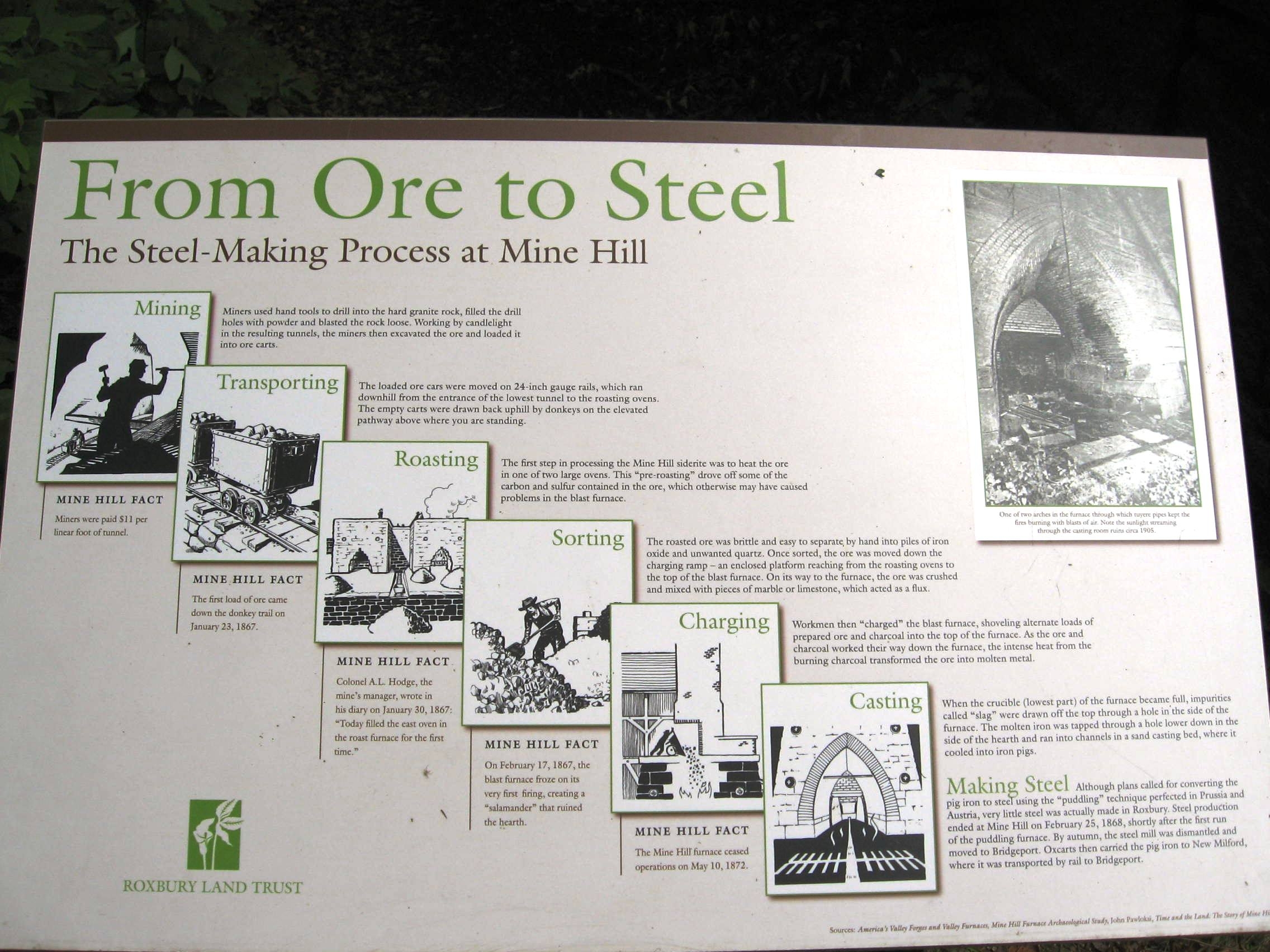Photograph as originally submitted to
this page in the Historical Marker Database
www.HMdb.org.
Click on photo to resize in browser. Scroll down to see metadata.
Photographer: Michael Herrick
Taken: June 22, 2009
Caption:
From Ore to Steel | Additional Description: The Steel-Making Process at Mine Hill
Mining
Miners used hand tools to drill into the hard granite rock, filled the drill holes with powder and blasted the rock loose. Working by candlelight in the resulting tunnels, the miners then excavated the ore and loaded it into ore carts.
Transporting
The loaded ore carts were moved on 24-inch gauge rails, which ran downhill from the entrance of the lowest tunnel to the roasting ovens. The empty carts were pulled back uphill by donkeys on the elevated pathway above where you are standing.
Roasting
The first step in processing the Mine Hill siderite was to heat the ore in one of two large ovens. This “pre-roasting” drove off some of the carbon and sulfur contained in the ore, which otherwise may have caused problems in the blast furnace.
Sorting
The roasted ore was brittle and easy to separate by hand into piles of iron oxide and unwanted quartz. Once sorted, the ore was moved down the charging ramp – an enclosed platform reaching from the roasting ovens to the top of the blast furnace. On its way to the furnace, the ore was crushed and mixed with pieces of marble or limestone, which acted as flux.
Charging
Workmen the “charged” the blast furnace, shoveling alternate loads of prepared ore and charcoal into the top of the furnace. As the ore and charcoal worked their way down into the furnace, the intense heat from the burning charcoal transformed the ore into molten metal.
Casting
When the crucible (lowest part) of the furnace became full, impurities called “slag” were drawn off the top through a hole in the side of the furnace. The molten iron was tapped through a hole lower down in the side of the hearth and ran into channels in a sand casting bed, where it cooled into iron pigs.
Making Steel
Although plans called for converting the pig iron into steel using the “puddling” technique perfected in Prussia and Austria, very little steel was actually made in Roxbury. Steel production ended at Mine Hill on February 25, 1868, shortly after the first run of the puddling furnace. By autumn, the steel mill was dismantled and moved to Bridgeport. Oxcarts then carried the pig iron to New Milford, where it was transported by rail to Bridgeport.
Submitted: July 5, 2009, by Michael Herrick of Southbury, Connecticut.
Database Locator Identification Number: p69555
File Size: 0.405 Megabytes
To see the metadata that may be embedded in this photo, sign in and then return to this page.
